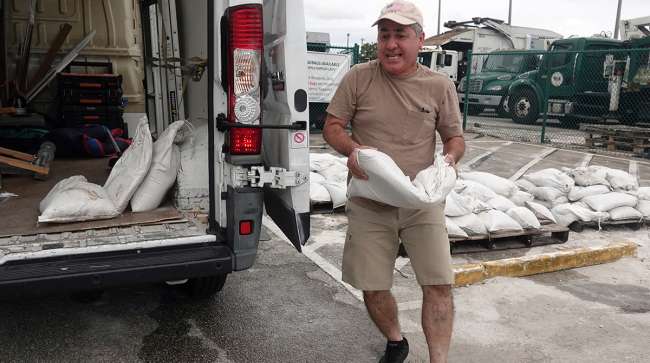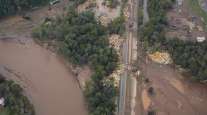Bloomberg News
Florida Faces New Storm Threat as Region Reels From Helene

[Stay on top of transportation news: Get TTNews in your inbox.]
Florida is bracing for another potentially dangerous and costly hurricane less than two weeks after Hurricane Helene devastated a wide swath of the U.S. Southeast.
Tropical Storm Milton, with winds of 40 mph, is forecast to build into at least a Category 3 hurricane with winds of 115 mph when it makes landfall in western Florida on Oct. 9, the U.S. National Hurricane Center said. Many areas across the state, including Tampa and Orlando, may get as much as 8 inches of rain. Some places might see as much as 12 inches, leading to a risk of flash flooding and rivers overflowing their banks.
“There is an increasing risk of life-threatening storm surge and wind impacts for portions of the west coast of the Florida Peninsula beginning late Tuesday or Wednesday,” said Dan Brown, a branch chief at the U.S. center. “Areas of heavy rainfall will impact portions of Florida Sunday and Monday well ahead of Milton.”
Based on current estimates, if Milton strikes Tampa Bay as a major hurricane, damage and losses could reach $100 billion to $200 billion, said Chuck Watson, a disaster modeler with Enki Research. The higher-end losses would require Milton exceeding the current forecast, which the U.S. National Hurricane Center said is possible.

(Jeff Roberson/Associated Press)
Aftermath of Helene
AccuWeather expects the economic impact of Hurricane Helene to be as much as $250 billion, making it one of the five costliest U.S. storms ever. Insured losses would be only a small part of that, with catastrophe modeling firm Karen Clark & Co. expecting a cost to insurers of roughly $6.4 billion, according to an early estimate.
Florida residents could face widespread power outages, tornadoes and storm surges over the next week, AccuWeather senior meteorologist Bob Smerbeck said Oct. 5.
The storm threat comes less than two weeks after Hurricane Helene tore a path of destruction across the Southeast, leaving behind a humanitarian and economic crisis. There are at least 225 people confirmed dead across six states, and countless others have been displaced.
“There was loss of life from storm-surge flooding around the Tampa Bay, St. Pete area,” AccuWeather senior meteorologist Bill Deger said. “We could see another significant storm surge with the way this storm is coming in.”
8:05 AM CDT Monday Update: Milton rapidly intensifies into a category 4 hurricane. The maximum sustained winds have now increased to 150 mph (240 km/h) and the minimum pressure has fallen to 940 mb. pic.twitter.com/wlJXbB5lkr — National Hurricane Center (@NHC_Atlantic) October 7, 2024
Milton’s winds are on track to reach speeds of 40 mph or more, including in parts of southern Georgia and South Carolina, also still reeling from Helene.
The storm could grow into a Category 2 or 3 hurricane by the time it hits central Florida on Oct. 9, resulting in considerable damage to trees, structures and other buildings, forecasts predict.
Across the U.S., natural catastrophes are becoming more expensive and more common as global warming supercharges storms and wildfires. Another massive Atlantic storm in the Southeast could strain commerce, potentially impacting regional ports. It may also stretch federal dollars even further, as U.S. agencies work to distribute resources to help areas hit by Helene recover.
“A landfall hurricane almost always is a multimillion-dollar disaster,” Deger said.
Want more news? Listen to today's daily briefing below or go here for more info:




